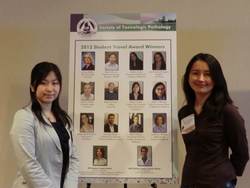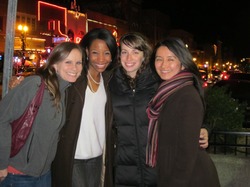Long-term treatment of a canine intramedullary spinal cord hamartoma
 Friday, March 1, 2013 at 02:00PM
Friday, March 1, 2013 at 02:00PM Honorable Mention, Cases and Abstracts
Keiko Petrosky and Dominik Faissler, Tufts University
From the Department of Clinical Sciences, Cummings School of Veterinary Medicine, Tufts University, 200 Westboro Rd, North Grafton, MA, 01536
A nine month old castrated male Irish Setter presented for evaluation of intermittent paraparesis and hind end ataxia. A MRI showed a large inhomogeneous intramedullary T2*-W voiding lesion over T2-3 with an associated cystic component at T4. A Dorsal laminectomy and longitudinal myelotomy was performed at T2-4. A large, dark intramedullary mass was removed. Histological analysis showed hemorrhage and a non-encapsulated, disorganized proliferation of vascular walls intermixed with fibrous tissue effacing the normal spinal cord architecture. The diagnosis of a hamartoma was further supported by positive immunostaining with anti-factor VIII and anti-actin antibodies. Two months post-surgery the dog was ambulatory with mild hypermetric ataxia. Eleven months after the myelotomy the patient presented for repeat imaging after the owner reported increased paraparesis and ataxia. At the mid-body of T3, the intramedullary lesion was noted more prominently than previously with an increased diameter of the T2*-W voiding lesion. The dog underwent definitive radiation therapy (3Gy/fraction, 15 treatments, total dose of 45 Gy). Additional recheck MRI studies at 16 and 25 months post-surgery showed an unchanged situation. The patient continued to be neurologically stable, with mild paraparesis, ataxia and moderately clonic patellar reflex in the left hind leg.
 MRI,
MRI,  Tufts,
Tufts,  cyst,
cyst,  dorsal laminectomy,
dorsal laminectomy,  hamartoma,
hamartoma,  intramedullary,
intramedullary,  radiation therapy,
radiation therapy,  spinal cord in
spinal cord in  Cases/Abstracts
Cases/Abstracts 

